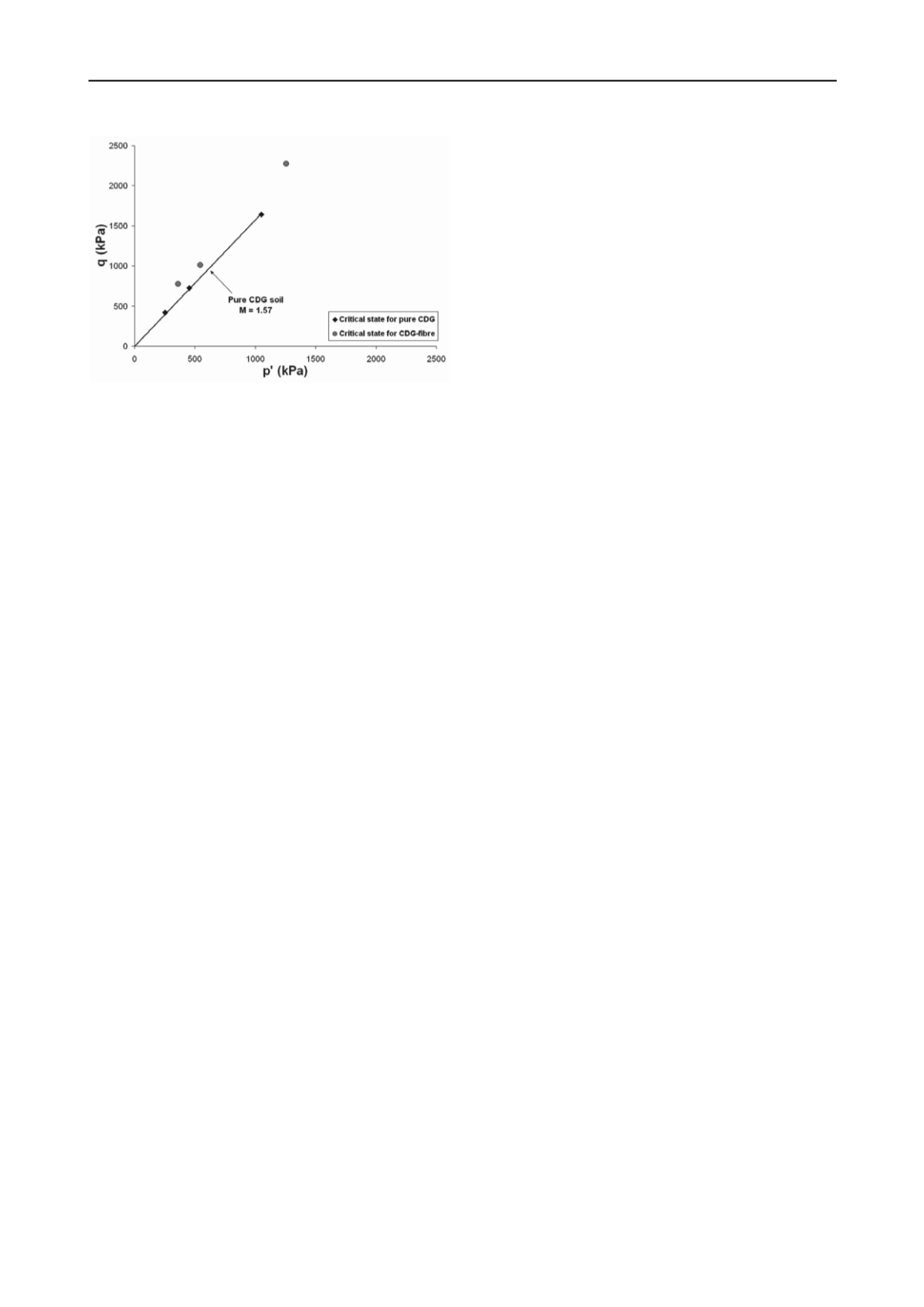
2544
Proceedings of the 18
th
International Conference on Soil Mechanics and Geotechnical Engineering, Paris 2013
6 REFERENCES
Altuhafi F.N. and Coop M.R. (2011). Changes to particle
characteristics associated with the compression of sands.
G
é
technique
61, No. 6, 459–471.
BS 1377:1990. Methods of test for soils for civil engineering
purposes. British Standards Institution, London
Consoli N.C., Casagrande M.D.T. and Coop M.R. (2005).
Effect of fiber reinforcement on the isotropic compression
behavior of a sand.
J. Geotech. Geoenviron. Engng, ASCE
131, No. 11, 1434–1436.
Consoli N.C., Heineck K.S., Casagrande M.D.T. and Coop
M.R. (2007). Shear strength behavior of fiber-reinforced sand
considering triaxial tests under distinct stress paths.
J.
Geotech Geoenviron. Engng , ASCE
133, No. 11, 1466–1469.
Figure 5. Critical states and end of test points for CDG and
fibre-reinforced CDG in q-p
'
plane.
Consoli N.C., Casagrande M.D.T., Thomé A., Dalla Rosa F.
and Fahey M. (2009a). Effect of relative density on plate tests
on fibre-reinforced sand.
Géotechnique
, 59, No. 5, 471–476.
4 CONCLUDING REMARKS
The results presented indicate that using discrete fibres can be
an effective means of reinforcing CDG, specifically at low
effective stresses. The unconfined compressive strength tests
showed a tenfold increase in strength with 0.5% fibres content
in the soil prepared at maximum dry density and optimum
moisture content. In triaxial drained tests, adding fibres seems
to increase the shear strength by up to two times the strength of
the unreinforced specimens, as well as its initial stiffness.
Dilation was also found to be reduced. Unique critical states
were reached for the unreinforced CDG and reinforced CDG
tested at high effective stress. The stress-dilatancy was found to
be frictional for all normally consolidated specimens, but with
different critical state stress ratios (
M
) for the fibre-reinforced
specimens depending on their effective confining stress. Initial
results also seem to indicate that the over-consolidation ratio
affects the performance of the reinforced CDG, noticeably in
the stress-dilatancy response, but more work is needed to
confirm it.
Consoli N.C., Festugato L. and Heineck K.S. (2009b).
Strainhardening behaviour of fibre-reinforced sand in view of
filament geometry.
Geosynthetics Int.
16, No. 2, 109–115.
Crockford W.W., Grogan W.P. and Chill D.S. (1993). Strength
and life of stabilized pavement layers containing fibrillated
polypropylene.
Transpn Res. Rec.
1418, 60–66.
Gray D.H. and Al-Refeai T. (1986). Behavior of fabric versus
fiber reinforced sand.
J. Geotech. Engng, ASCE
112, No. 8,
804–826.
Lee I.K. and Coop M.R. (1995). The intrinsic behaviour of a
decomposed granite soil.
Geotechnique
45 (1), 117–130.
Maher M.H. and Ho Y.C. (1994). Mechanical properties of
kaolinite/fiber soil composite.
J. Geotech. Engng, ASCE
120,
No. 8, 1381–1393.
Santoni R.L., Tingle J.S. and Webster S.L. (2001). Engineering
properties of sand–fiber mixtures for road construction.
J.
Geotech. Geoenviron. Engng, ASCE
127, No. 3, 258–268.
Silva Dos Santos A.P., Consoli N.C. and Baudet B.A. (2010).
The mechanics of fiber-reinforced sand.
Géotechnique
, 60,
No. 10, 791–799.
5 ACKNOWLEDGEMENTS
The authors wish to acknowledge Ku Hei Man, Gloria (final
year project student 2012, The University of Hong Kong) for
providing the Unconfined compressive test results. The
financial support provided by Hong Kong Research Grant
Council GRF No.70211 is gratefully acknowledged.
Yan W.M. and Li X.S. (2012). Mechanical response of
medium-fine-grained decomposed granite in Hong Kong.
Engineering Geology
129-130 (2012) 1–8.


